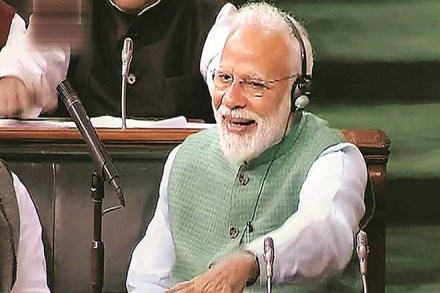By Parmod Kumar and Meenakshi Rajeev
Budget 2019 India: Farmers’ distress is a long-standing problem for India, and while different Governments over the years have tried to address this concern through various policies, it still remains a burning issue for the country. The recent large-scale farmers’ protests and march to the capital have brought the anguish of farmers to the forefront. Being a budget just preceding the general election, it is expected that the sector will receive the attention of the Finance Minister. While the current Government has initiated certain programmes for the farm sector, their implementation at the ground level is yet to show desired results.
The Minimum Support Price system for agricultural crops is one such program, and of interest here is the hike in minimum support price for a much larger set of products as declared in the previous budget. While debating the desired level of the minimum support price, in particular whether it is to be as per the Swaminathan committee report or not, doubts have also been raised by various scholars about the implementation issues of such a programme. Needless to say, without proper records of sale by small and marginal farmers, realization of declared hiked MSP still remains only a distant dream.
Also Read: BUDGET 2019 INCOME TAX CALCULATOR
The e-NAM (National Agriculture Market) programme’s efforts have also not been able to translate to better price opportunities for farmers’ crop for doubling the farmers’ income. Another programme, the FasalBima Yojana, showed increased the enrolment in the previous year, but the current enrolment shows a decline. Delays in payments of compensation, and compensation which barely covers the cost of production remain other major concerns. If these schemes would have worked fully, there would be no need for direct cash transfer.
While presenting the last budget before the Lok Sabha Election 2019, the Finance Minister Piyush Goyal declared under the Pradhan Mantri Kisan Samman Nidhi, Rs 6000 per year for each farmer, to be transferred directly to farmers’ bank accounts in three instalments, for those who have less than 2 hectares of land holdings. The total amount budgeted for direct transfer is Rs 75381 crore per annum. This initiative is likely to benefit 12.56 crore small and marginal farmers at an estimated cost of around Rs 75,381 thousand crore. As per the 2015 Agriculture Census, the small and marginal land holders taken together (0.00-2.00 ha) constituted 86.21% (12.56 crore in number) while their share in the operated area stood at 47.34%. The question that arises is whether this support would make any significant difference, given the widespread distress especially among marginal and small farmers?
As per the Situation Assessment Survey of Farmers conducted by theNational Sample Survey Organisation (NSSO 2013), the (estimated) average monthly income of an agricultural household in 2012-13 was around Rs 6,426. The average monthly consumption expenditure per agricultural household was estimated to be around Rs 6,223. Thus, the direct transfer of fund as promised by the Finance Minister appears to be barely sufficient for meeting one-month’s consumption expenditure of marginal and small holders, if we assume the transfer is aimed at providing consumption support.
The promised amount will be transferred in three instalments of Rs 2000 each, which may be too little to meet farmers’ working capital needs, if we consider this a support for production. Besides, the timings of each transfer will determine how much of it will be able to meet farmers’ requirements at the time of sowing as well as during the period of weeding and harvesting. More importantly, the package declared takes care of only the land-owning farmers. It grossly ignores both tenant farmers as well as land less cultivators and labourers who are much more vulnerable. The universal package also ignores the fact that costs and returns from the irrigated holdings widely differ from that of dry land farming. The economic situation of farmers of dry land areas is much more vulnerable compared to that of farmers holding irrigated land.
Further the budget also declared that farmers who are severely affected by natural calamities would have their loans rescheduled, and will not only get 2% interest subvention but also an additional 3% interest subvention upon prompt repayment for the entire period of the rescheduled loan. Along with this, a 2 percent interest subvention has been announced for farmers pursuing animal husbandry and fisheries. It is further promised that a new department for fisheries will also be set up.
However, it is to be noted that the share of marginal and small farmers remains very low in the total off-take of institutional credit, and thereby the major benefit of interest subvention is likely to be captured primarily by the medium and large farmers. Given the kind of distress the Agricultural Sector is facing, a much larger support was expected in the Union Budget. Nevertheless, one should keep in mind that this budget was only an interim budget and major structural measures are expected to be left for the new government.
Unless, some restructuring related to post harvest management takes place, which ensures a much better share of consumer price for the farmers, their predicament is expected to continue and eradication of farmers’ suicide would remain a distant dream.
(Both the authors are Professors at ISEC, Bangalore)
